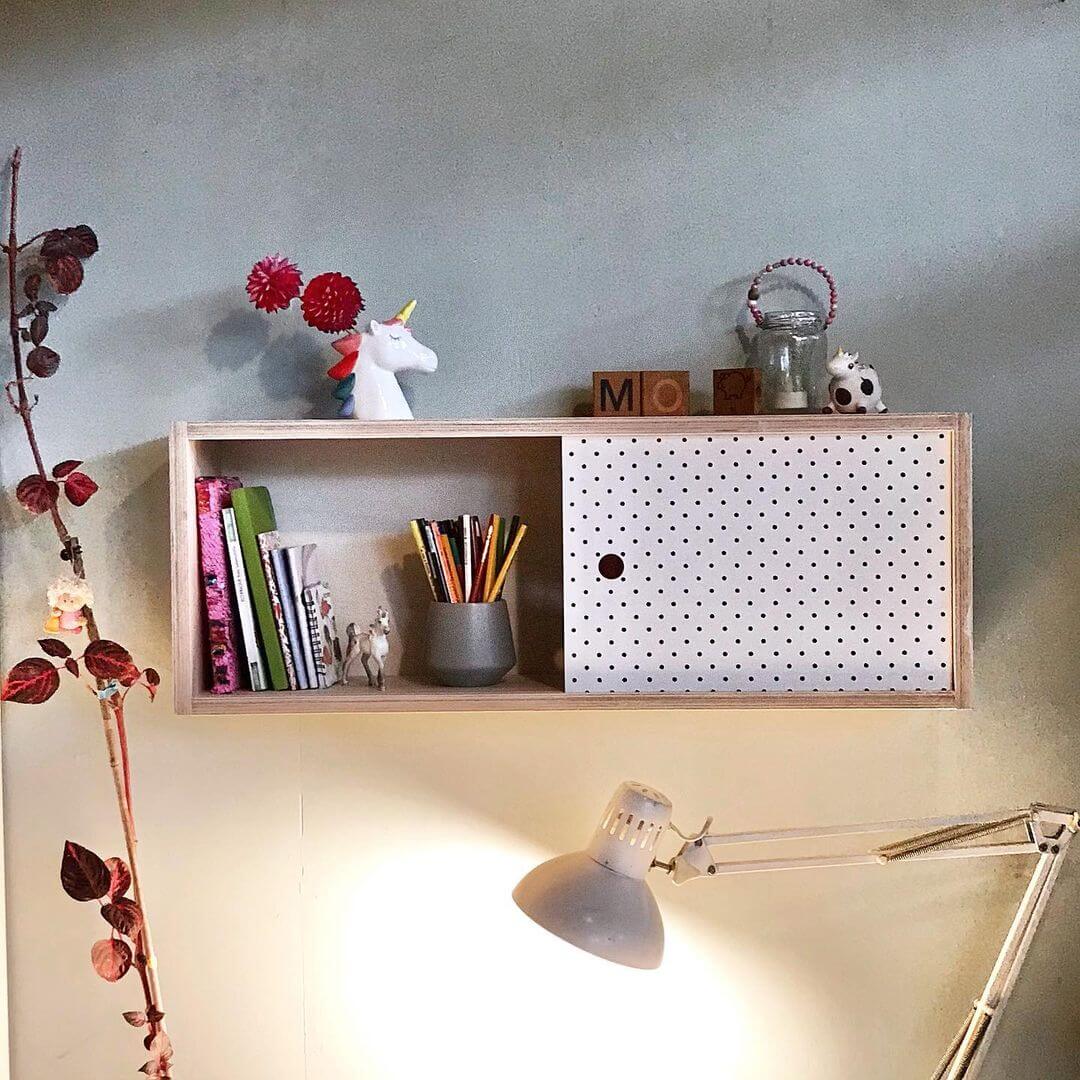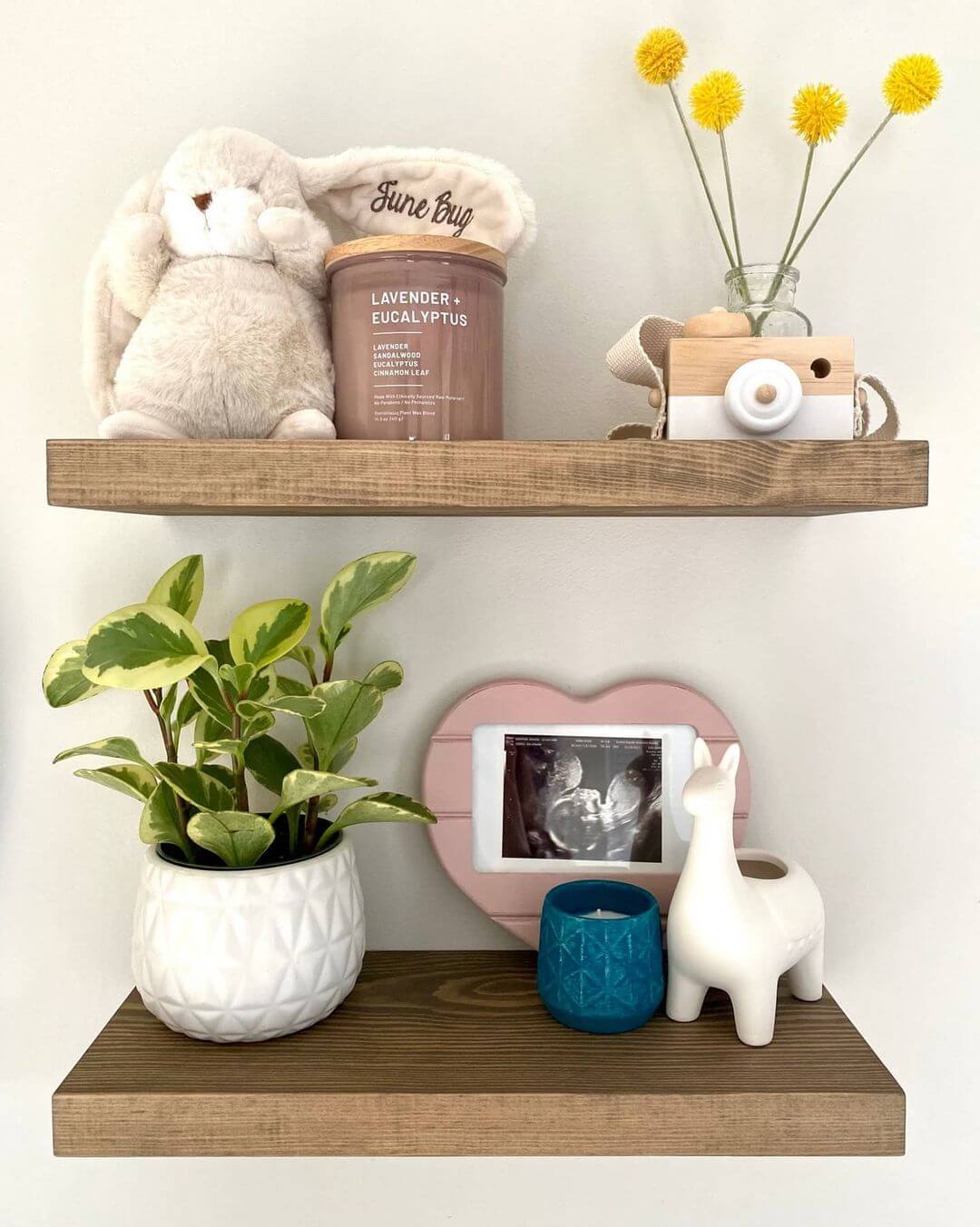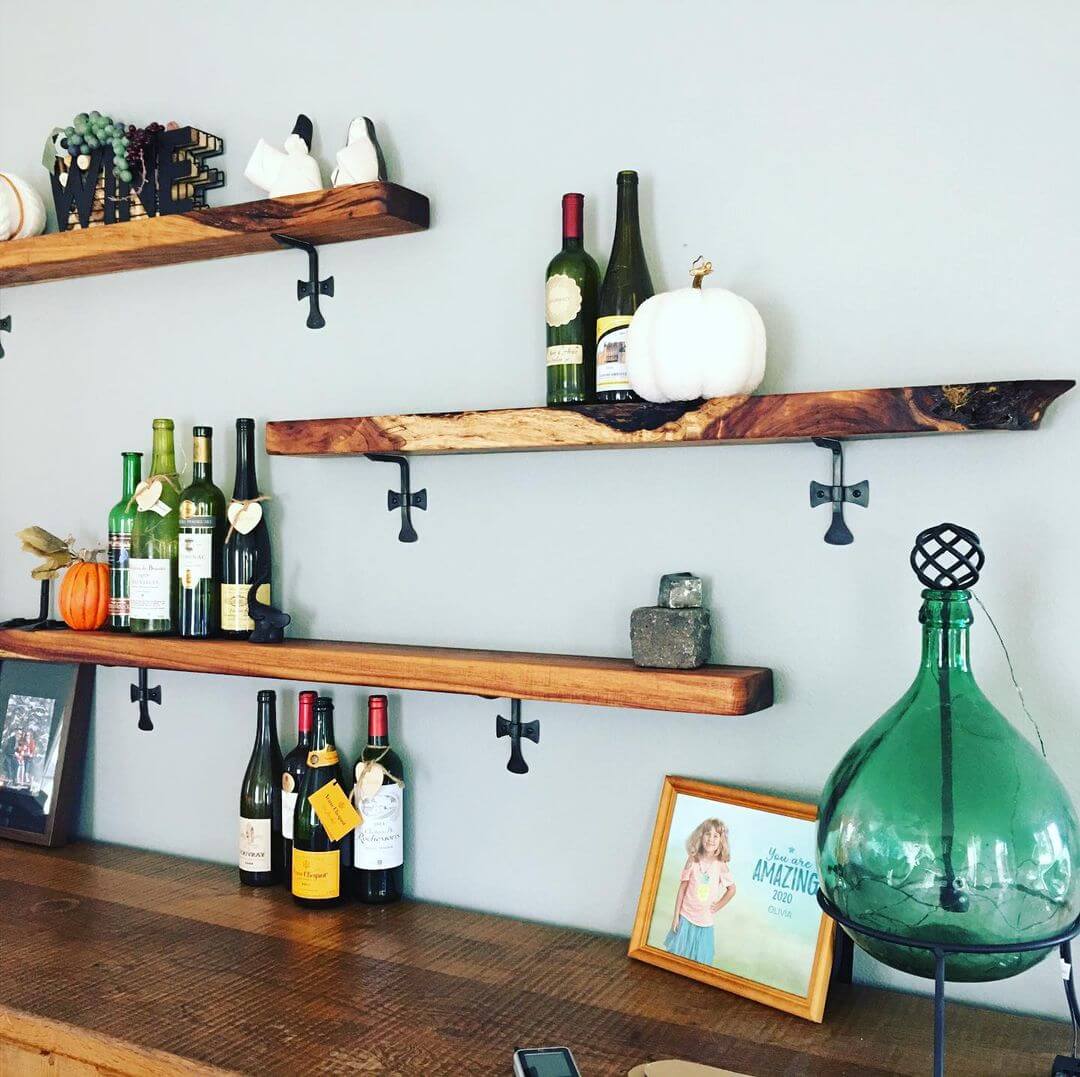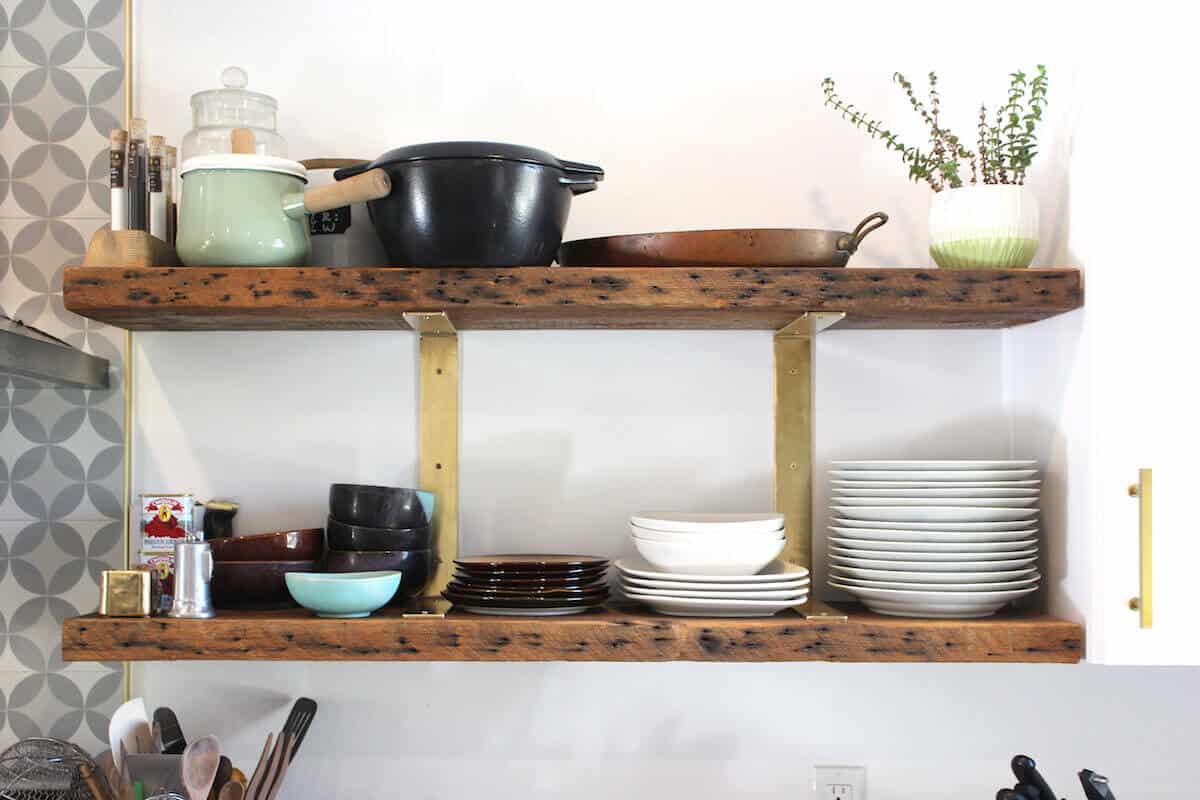Best Wood for Shelves That Will Last Forever
Have you been wanting to add wooden shelving to your home decor so you could arrange certain items in an even more attractive design fashion?
Do you have books and objects stacked around your house, waiting for a more permanent home?
Building your own wood shelves is an excellent idea to save money and maximize your home storage and display space.
Wood, in particular, is a traditional and efficient material. Furniture made of high-grade wood will, if you take care of it, will last you years or decades.
But, how do you choose the best wood for shelves, be it DIY bookshelves or any other wood shelving project? Well, that’s exactly what this in-depth guide is for, and after taking a few notes covering all of your options, you be good to go with the ideal piece of lumber.
What Makes a Good Wood Shelf?
Depending on the objects you want it to hold, you’ll be looking for different qualities in your wood shelf.
If you’re looking to build a bookshelf, you’ll need sturdy and strong shelves since books can weigh them down.
If you’re building an outdoor storage shed with shelves, consider not only the weight and types of the objects you’ll store but also how well the material will stand up to weathering for a long-term solution.
Likewise, it’s important to take location into account. Depending on where you live, getting access to certain kinds of wood will be more difficult. Picking up pine is easier on the West Coast, for instance, than it is in the Midwest.

Key Qualities for Wood Shelves
In general, every project deserves wood with a few specific qualities:
- High-grade. While the grading system for wood can be confusing, most shelving projects can safely stick with No. 1.
- Solid wood. For anything that will be bearing weight, you want to avoid particleboard and other weak materials.
- Hardwood, or high-quality softwood. While hardwoods tend to have more explicit grading criteria and are overall better for a bookshelf, certain softwoods are also acceptable.
- Defect-free wood. Avoid woods with deep knots, which may wear out or even collapse over time, as well as rough-hewn or challenging-to-paint sides.
With these qualities in mind, you have several options, each providing its own benefits and drawbacks for showcasing your fancy ornaments and DIY gifts from friends when they visit.
Types of Wood for Shelves
Be it hardwoods or softwoods, the type of material you choose for your bookcase or floating shelf in your hallway will largely depend on the look you’re going for, and how much wear and tear the shelf is likely to experience.
Solid wood bookcases and shelves offer a traditional look and feel, and are perfect for displaying treasured items or collections. They come in a variety of hardwood options such as oak, mahogany, or cherry, and can be stained or painted to match your décor.
However, solid wood can be quite heavy and is prone to warping, so it may not be the best option if you’re looking for a lightweight shelf that can be easily moved around.
All things considered, let’s break down all of your options for the best shelving alternatives to mull over for your next purchase at Wayfair for your very own DIY woodworking project.

Plywood
Plywood is an excellent option for indoor bookshelves. It’s a manufactured wood of density fiberboard that is the standard recommendation for lightweight DIY bookshelves and cabinets.
Many of the woods found on this list also make up a standard pallet of plywood. The most common type of plywood veneer (the layer that covers a particleboard center) is Douglas Fir, but manufacturers often use Pine, Cedar, and even hardwoods like mahogany.
Plywood also comes in various grades, denoting strength and thickness, making it suitable for many different projects. B/C grade plywood, for instance, is excellent for garage shelving units and takes to most commercial wood glue or PVA glue.
The most significant drawbacks of plywood go hand-in-hand with its advantages. Cabinet-grade plywood is inexpensive and easy to find in stores, but more specialized varieties can be rare.
Of those more expensive varieties, the veneer trim is often very thin, making your wood shelves more prone to bending under the load of your books.

Pine
Builders often use pinewood for indoor, lightweight furniture. Like plywood, one of its major advantages is how easily inexperienced carpenters can paint and stain it.
Aesthetically, you can turn pine to suit almost any style or color palette. Unpainted, it is a yellowish-white wood, often scored by brown knots.
Pinewood is, therefore, an excellent choice for anyone looking for a rustic feel.
Pine is also an easy choice for colorful children’s shelving or a replacement piece meant to blend in with existing pieces in your home.
There are some issues with using pine for shelves, however. Unlike most of the woods on this list, pine is a softwood, which means it’s more vulnerable to wear and tear over time. You can expect several dings and scratches on pinewood shelves, especially if kids frequently use them.

Koa
Also called Tigerwood, Koa is a type of wood renowned for its longevity and strength. A rare combination of low weight and exceptional strength makes this a highly sought-after material.
The most common variety of this wood, Brazillian Koa, has a rich brown color and a dark grain, making for a very distinctive look. You may find a particular species of tigerwood when searching for hardwood flooring.
Typically, wood shelves and cabinets use a softer variety.
A Koa shelf is ideal for most spaces in your home, including outdoor patios and porches. It’s a highly water-resistant wood and can withstand extreme climates without warping or bending.
Unfortunately, Koa is not a common material in furniture. Artisans use it mostly for other purposes, which means you might be hard-pressed to find useful information online.
Koa is also moderately challenging to work with, and so it may not be suitable for first-time carpenters.

Paduak
Paduak is an uncommon yet versatile hardwood for indoor shelving. Sporting various colors, from a pale pinkish-orange to a deep red, shelves made of Paduak fit into almost any type of design.
As with much of the wood on this list, the primary purpose of Paduak shelving is stylistic. This wood is well suited to a shelf unit for informal or modernist spaces. In addition, a skilled craftsman can easily make it into smaller, artisanal furnishings, like liquor cabinets and jewelry boxes.
From a practical standpoint, Paduak is famously resistant to rot and termite damage. It easily takes any type of screw head, nail, or table saw blade you have at home.
Aside from its density, the main drawback of this wood is its odor. Paduak releases a distinctive smell when cut that may aggravate the skin, eyes, and throat of some carpenters with allergic tendencies.

Walnut
You could make a lovely shelf for your books out of walnut. Walnut wood is a straight-grained wood, strong, and stable hardwood native to eastern North America. Its natural yellowish-brown color has a remarkable range, with multiple hues often visible in a single board.
Many people make mantels out of walnut for shelves, where daylight can more easily bring out its light chocolate tones. Aesthetically, it is very much an alternative to the richer color of most wood materials on this list.
Walnut can handle any saw and is good for intricate carving, making it easy to design your shelf. Some experts consider it easier to use than any other type of wood; if you know what you’re doing, you can save money on installation costs by creating a bookshelf from scratch.
Unfortunately, the reverse is also true. Walnut is an extremely heavy and difficult hardwood to transport, and installation can be tough for novices to manage.
The cost of walnut itself is also relatively high, valued at nearly $10 per board foot. Wood shelves made of walnut-trim plywood can help offset this expense.
More importantly, this wood scratches and wears easily. Walnut furniture and frame pieces shouldn’t stay outdoors for long, as these materials have poor weather resistance.

Cherry
Cherry wood is mostly an aesthetic choice. Boards and side panels made with this material are beautiful and, if they have aged well, antique collectors often seek them out.
In terms of appearance, cherry has a rich, reddish color with a fine grain. Cabinets made from cherry wood often have clean, discernable lines. Beyond wood shelving, it shows up frequently in hand-carved chairs and other expensive furniture.
Cherry has physical qualities that make it an excellent choice for bookshelves, as well. It’s easy to shape and polish, making it friendly to novice carpenters. It’s also one of the lightest-weight hardwoods on this list and can easily hold books and other objects.
Cherry’s main downside is, of course, its cost. Six board feet of Cherry lumber can sometimes sell for upwards of $100, depending on density. This price goes up outside of its typical range in the southeastern U.S. and South America.

Cedar and Red Cedar
Cedarwood comes in several regional varieties, from Western to Eastern red cedar. Thus, it is a common and readily available variety of wood, though each species has slightly different qualities.
Western red cedar is more weather-resistant than its Eastern cousins, making it pricier and more common in outdoor environments. By contrast, Eastern cedar shares many qualities with pinewood, making it well-suited for bookshelves.
The main difference between cedar and pine is the former’s deeper, more vibrant color. You can treat, stain, or paint it with little effort, making it visually versatile.
While not as resistant to the elements as western cedar, people still prize Eastern cedar for its stability in humid conditions. Cedar shelves will not warp over time if you live in a particularly humid climate.

Red Oak
One of the easiest hardwoods to handle, red oak is a well-loved material for hobbyists and novice carpenters.
Though the intricate grain of red oak sometimes makes it look fancier than it is, the grain can become a highlight of the side or sides of a stained bookcase and for any trim.
This wood makes for stable and reliable bookshelves at a low barrier of entry. Its rating strikes a delicate balance between hardness and workability.
Like pine and cedar, red oak stains and finishes easily, without the risk of blotching. It also sands well as long as the craftsman remembers to use a pad or block.
Rather than cost, red oak’s main problem is how easily it suffers water damage. Red oak will blacken on contact with water. It also dents somewhat easily, though it is resistant to scratching.

Douglas Fir
If you’re building a bookshelf, Douglas Fir is a fantastic choice for wood boards. Woodworkers highly recommend it for light and medium-weight shelving, including bookshelves and cabinets.
Though native to the Pacific Northwest, Douglas Fir is available for purchase across the United States. It is not technically a fir, but a pine, and shares some qualities with other pinewoods.
A highly dependable wood, people often stain Douglas Fir to give the appearance of a dark hardwood like oak. It’s a versatile “everything wood” that people can rely on for any DIY project, from bookshelves to home appliances.
While one can order Douglas Fir from just about anywhere in the country, wood pieces are more expensive for East Coast residents. It also comes with some of the same issues as other softwoods on this list.

Mahogany
One thing mahogany does well is to radiate a sense of classic beauty. Along with walnut and other types of wood like White Oak, it regularly competes for the highest-demanded type of wood in the U.S.
A shelf of pure mahogany is 70% harder than most other commercial woods, including oak. This hardness makes it an incredibly durable wood, resistant to the dents and scratches to which woods like cedar and Douglas Fir are vulnerable. Attempts to stain and paint wood like mahogany will typically go very well.
Naturally, the most significant issues with mahogany are cost and availability. It is a highly prized wood throughout the world. Lumber without wood finish can sell for as much as $28 per board foot.

Picking the Best Wood Shelves
Selecting the right wood for shelves isn’t the same as picking up a lump of lumber for your DIY firewood rack. It means reading the right information and finding the best tips and advice for your needs and then applying that advice based on the ideal application.
Different functions and environments mean selecting a different wood for shelves. Whatever type of wood you go with, make sure it’s the right fit for you and your next DIY project.
Every material–from cherry to hardwood plywood and everything in between–comes in different grades. Always make sure the grade you need is what you’re getting from the supplier.
Luckily there are plenty of options are available when it comes to selecting hard or softwoods for making shelves. Whether it be a hard or medium-density wooden finish, with the right stain, you can be sure to get the picture-perfect-looking shelves you desire.
In Conclusion
So, now that you’ve narrowed down the selection process, simply gather a few hand tools from your tool chest and grab what lumber you like best, and get to building something of substance.
Finally, remember that experience matters. If you’re a first-time carpenter, some of these wood types will be more trouble than they’re worth.
Take our advice: Between the cost, the painting, and the odds of running into wood with unrecognized defects, you’ll soon wish you had gone with easier material.
For more advice and reviews on woodworking and DIY design works, check out our diverse range of resource pages with everything related to DIY home improvement.



